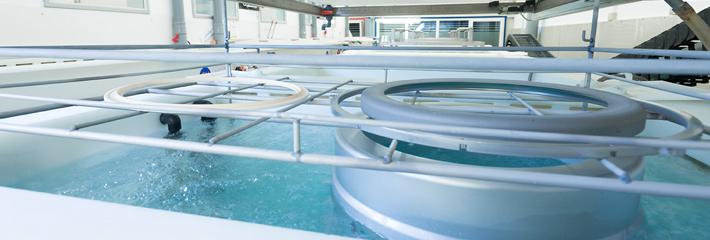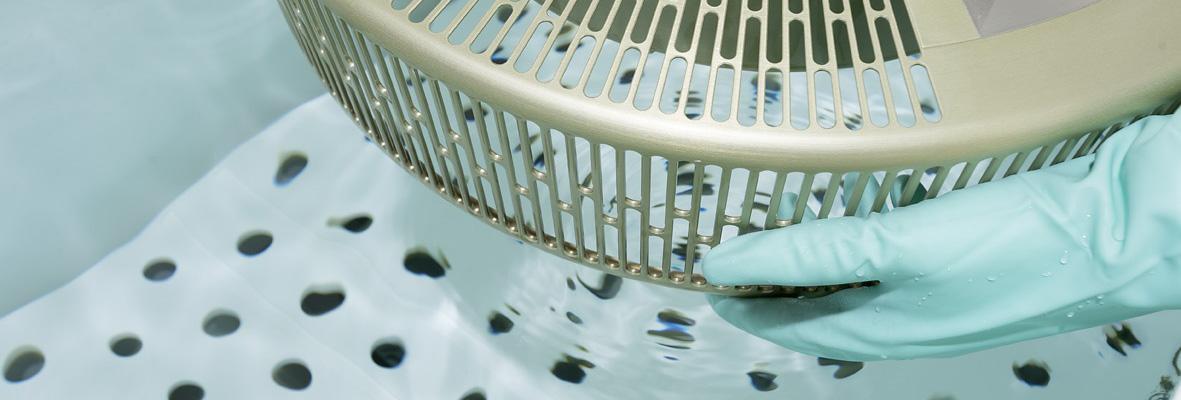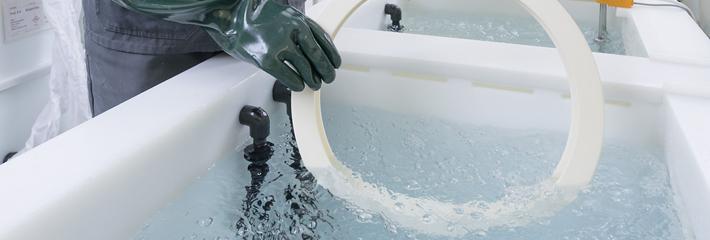Ultrasonic Cleaning
Benefits
- Fast and consistent cleaning
- Ability to reach inaccessible areas thanks to cavitation effects
- Surface profiling for contaminant adhesion
- Environmentally friendly: no solvent or chemical wastes
- Coupled with DI water resistivity measurements, the cleaning effectiveness is measured by liquid particle counters
Properties
- Tanks with multiple frequency ultrasonic units
- Ultrasonic function and power monitoring
- DI water recycling loops
- Liquid particle counters
- DI water resistivity measurements
Ultrasonic cavitation uses sound waves in the higher frequency range (> 16 kHz) to create small cavities (bubbles) in the cleaning liquid that collapse (implode), releasing a considerable amount of energy.
Due to the nature of this phenomenon, this activity is mostly concentrated at the interface between the cleaning solution and the contaminant being removed.
Ultrasonic waves can penetrate thin layers of metal and propagate around corners to clean work pieces inside and outside. The higher the frequency, the better smaller particles can be removed.
Systems up to 1 MHz are available, whereas the range between 25 and 140 kHz covers most of the technical applications.
Cleanpart cleans new (OEM parts) and used components and assemblies for the semiconductor, optical, disk drive, medical, vacuum and related industries.


















